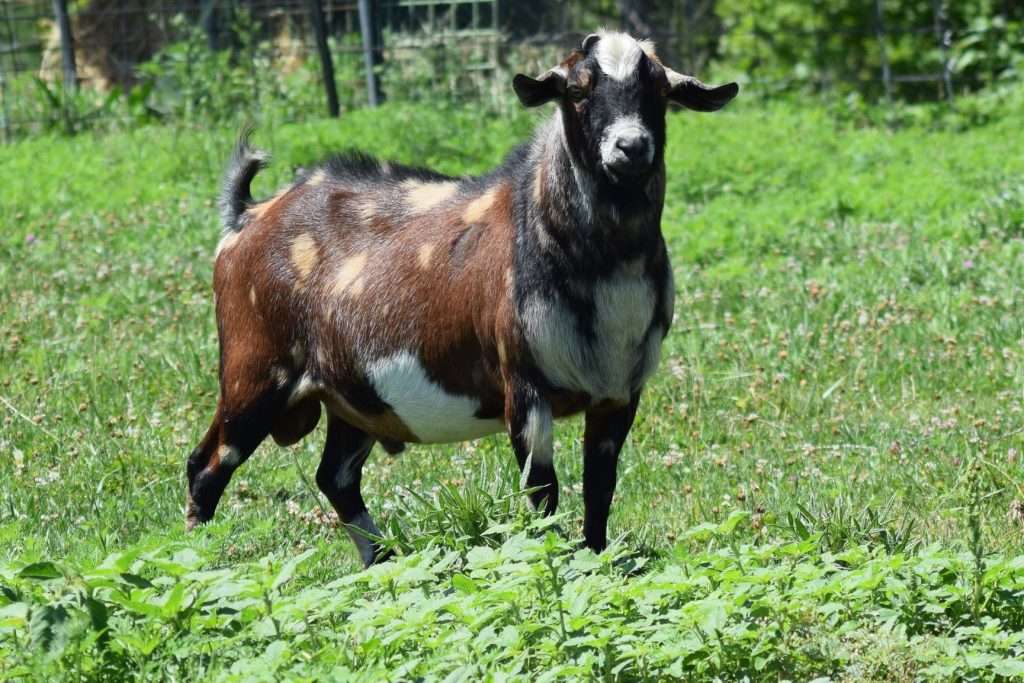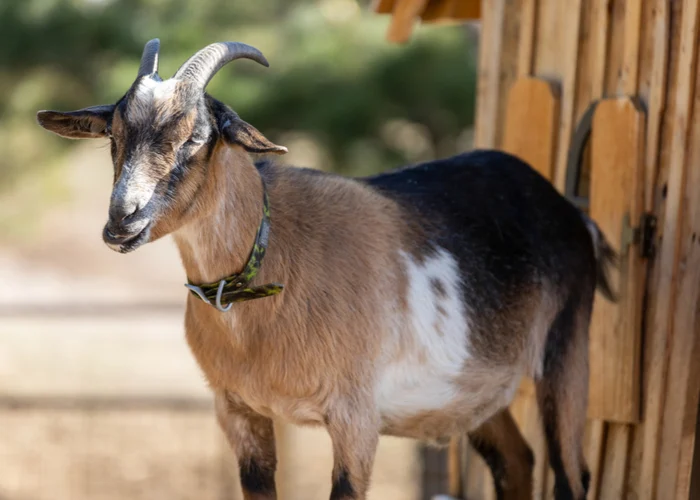
Description:
These goats blend the stocky Nubian body with the delicate legs of pygmy goats. Although having long ears, they don’t have the obvious “lop-eared” appearance of Nubians. The sides of their ears protrude and are typically the same color as their fur.
They come in a range of hues and have short, shiny coats. Reddish brown and dark brown are the most prevalent colors. A black stripe runs along the backs of the majority of these goats. Their faces are typically speckled or striped. The horns of kinder goats are short and stick out from the head at the back. The horns of the male are longer and somewhat curved.
Behavior:
They are as sociable as Nubians and possess the lively demeanour of pygmy goats. They are perceptive, observant, and simple to train. These goats have friendly dispositions that match their adorable appearance. The reason why one homesteader refers to them as “the best goats you never heard of” may be due to this.
Benefits/Uses:
A Kinder doe may produce 680 kg (1500 lb) of milk throughout the course of 305 days of lactation. The milk is said to be high in milk solids and appropriate for manufacturing cheese because it has an average butterfat concentration of 5.5%, occasionally reaching 7%.
The Kinder goat breed can be bred at any time of the year, just as other goat breeds with tropical origins. Twin and triplet births are common because this breed is very prolific. The children gain weight quickly; the average dressed weight after slaughter is about 60%.
Origin/History:
American domestic goats of the Kinder breed. On a farm in Snohomish, Washington, in the northwest of the country, the Kinder was created in 1985. There, a Nubian doe and an American Pygmy buck were crossed. The resulting breed was carefully developed to produce a small yet well-muscled goat that would be ideal for both the production of goat’s milk and goat’s meat. A herd-book and breed society, the Kinder Goat Breeders Association, was created in 1988; by 2006, over 3,000 head had been registered. The breed has expanded to Brazil and Canada in addition to the United States, where it is now found in around thirteen states.
Keeping as Pet:
- Housing
Build a sturdy, cozy home for your goats. The Kinder breed of domestic goat prefers a dry, clean environment to live in, just like many other domestic goat breeds. In general, raised houses (those that are elevated above the ground) are recommended for Kinder goat rearing. Create the home in a way that makes it simple for you to clean it. Moreover, make sure the house has a proper ventilation system, enough fresh air movement, and enough light. An area of 10–12 square feet per goat will be plenty for this medium-sized breed. If you choose to grow your goats using a stall-feeding system, you will need 20–25 square feet of play room for each goat.
- Feeding
The most crucial aspect of Kinder goat farming is providing high-quality, enough nutrition. As a result, always attempt to feed your goats wholesome stuff. The Kinder goats are a dual-purpose breed and need both grains and greens for healthy growth.
Moreover, the Kinder goats need vitamins and minerals. For a better recommendation, speak with a local veterinarian. Along with nourishing food, make sure to always attempt to provide your goats adequate clean, fresh water to meet their needs.
- Caring
The Kinder goat farming industry must take special precautions. The Kinder goat breed is known for being a particularly attentive, productive, and friendly goat breed. And they typically need less attention. Even so, giving the animals more attention will assure their continued health and growth. Vaccinate, deworm, and strive to constantly take good care of your goats.
Table






